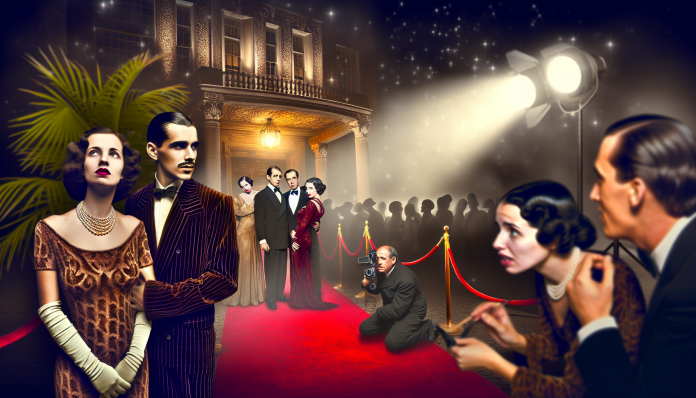Introduction
Old Hollywood—a time when glitz and glamour masked the complex and often scandalous personal lives of its stars. Among late-night parties and elaborate premieres, many famous faces were embroiled in secret love affairs that sent shockwaves through the media and public. These hidden romances and the ensuing scandals not only defined the careers of iconic figures but also reflected the moral compass of the era. This article delves into some of these hidden love affairs, exploring how societal norms shaped public perception and how these historical events contrast sharply with today’s standards of morality and acceptance.
The Scandal: A Symphony of Secrets
Consider the infamous affair between Elizabeth Taylor and Eddie Fisher. In the early 1960s, Taylor was dealing with the fallout of her turbulent marriage to Michael Wilding, and Fisher was a rising star who was married to actress Debbie Reynolds. Their affair began after the death of Taylor’s third husband, Mike Todd—an event that made the actress vulnerable and seeking solace in the arms of Fisher.
- Key Events:
- 1958: Taylor’s husband, Mike Todd, dies in a plane crash. Fisher, a close friend, offers support.
- 1959: Fisher and Taylor begin their affair; a scandal erupts when Reynolds discovers the relationship.
- 1960: Fisher and Reynolds divorce; Fisher marries Taylor shortly after.
Public reactions were explosive! The entertainment media of the time, which thrived on scandal, became voracious in reporting every detail. Headlines screamed betrayal, depicting Reynolds as a victim—a “girl next door”—while casting Taylor as the villainess. The scandal ultimately polarized fans and critics alike, a reflection of the rigid gender roles and the expected morality of Hollywood at the time.
Quotes from the Era:
- Reynolds once stated, “I had a perfect marriage until I discovered that I didn’t,”—a poignant expression of the turmoil and confusion surrounding these personal dramas.
Moral and Cultural Analysis
In the 1960s, the notion of marital fidelity was a stringent norm in American society. Old Hollywood, though a glamorous facade, reflected societal values of the day—values steeped in traditional marriage and sexuality that left little room for deviation.
- Societal reaction:
- Public Outcry: The affair marred both Taylor and Fisher’s public images, with fans reacting in disbelief. The era was marked by moral outrage at infidelity, leading to press campaigns that vilified Taylor and sympathetically portrayed Reynolds.
- Career Impact: While Fisher struggled to maintain his popularity post-affair, Taylor—ever the phoenix—managed to rebound, eventually becoming a humanitarian icon and an industry powerhouse.
In contrast, the modern interpretation of such scandals is vastly different. There is a more nuanced understanding of love, relationships, and individual autonomy today. The critique of gender dynamics is less harsh on the women involved, as contemporary views tend to hold all parties accountable. Scandals involving infidelity can spark discussions about the complexity of human relationships rather than solely focusing on betrayal.
How Would Today’s Audience View This Affair?
- Greater Acceptance: A modern audience might view Taylor and Fisher’s relationship through a lens of empathy, understanding the personal struggles of the individuals involved instead of vilifying them.
- Power Dynamics: Discussions surrounding personal freedom and sexual independence overshadow moral judgments, acknowledging that each person’s choices stem from a myriad of factors—including emotional trauma, societal pressure, and personal desires.
Conclusion
The intricate web of hidden love affairs in Old Hollywood illuminates the evolving attitudes toward sex, power, and personal freedom. These historical events remind us how far society has come in understanding love and companionship. What was once seen as scandalous is now often viewed through a lens that champions authenticity and self-fulfillment.
Reflecting on these scandals invites contemporary audiences to question how far we’ve truly evolved. Are we still bound by retrograde perceptions of morality when the stakes become personal? As history teaches us, the past is not just a narrative of scandal but a catalyst for conversations about the evolution of our collective values.
In studying the scandals of Old Hollywood, we see the dual power of fame and the fallibility of the human heart. May these tales of love, betrayal, and redemption encourage us to approach the complexities of modern relationships with compassion, understanding, and an open mind. As we unravel the hidden affairs and the shadows of yesteryears, we uncover not just the truth about our idols but also an opportunity to redefine our perspectives on love and loyalty in an ever-changing world.

